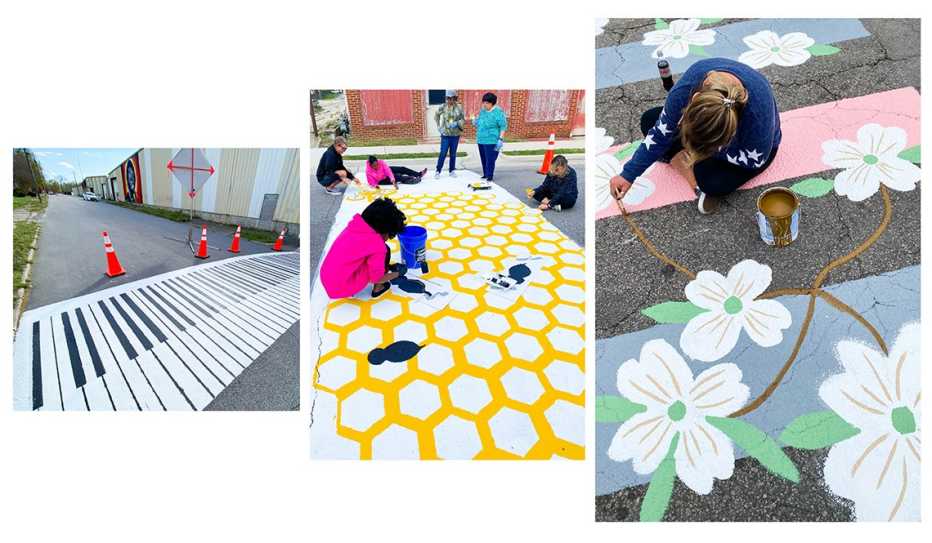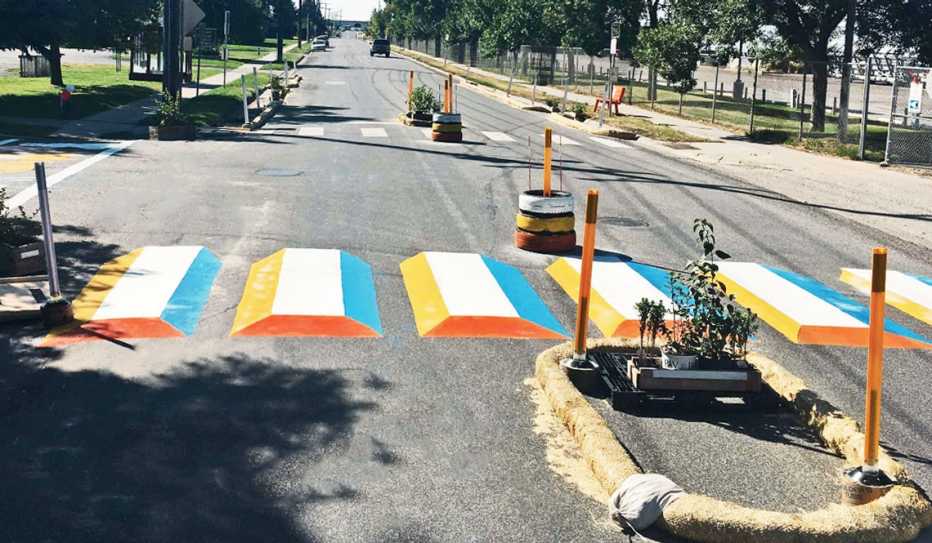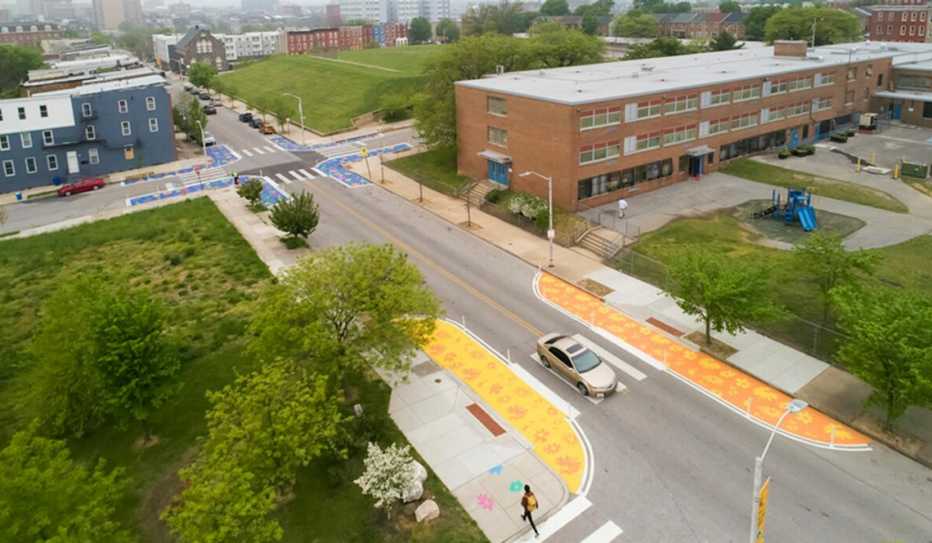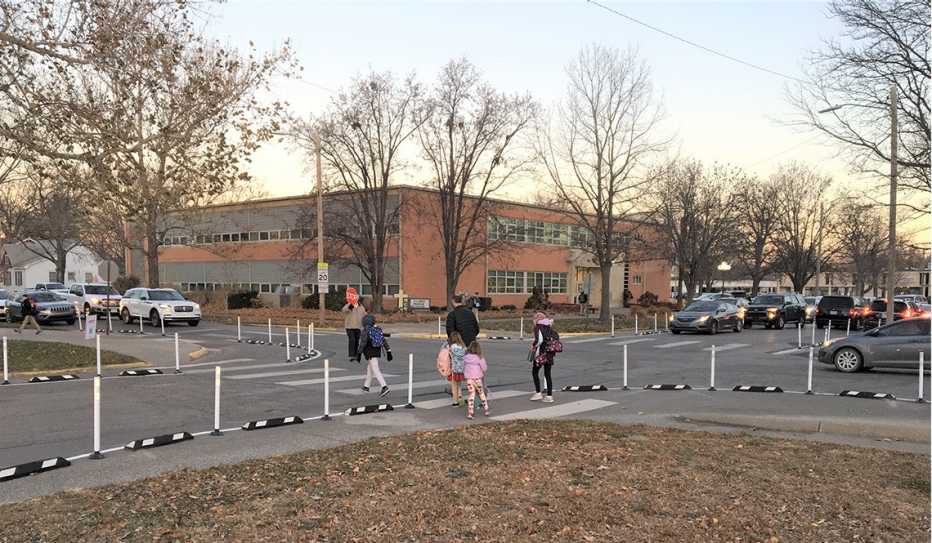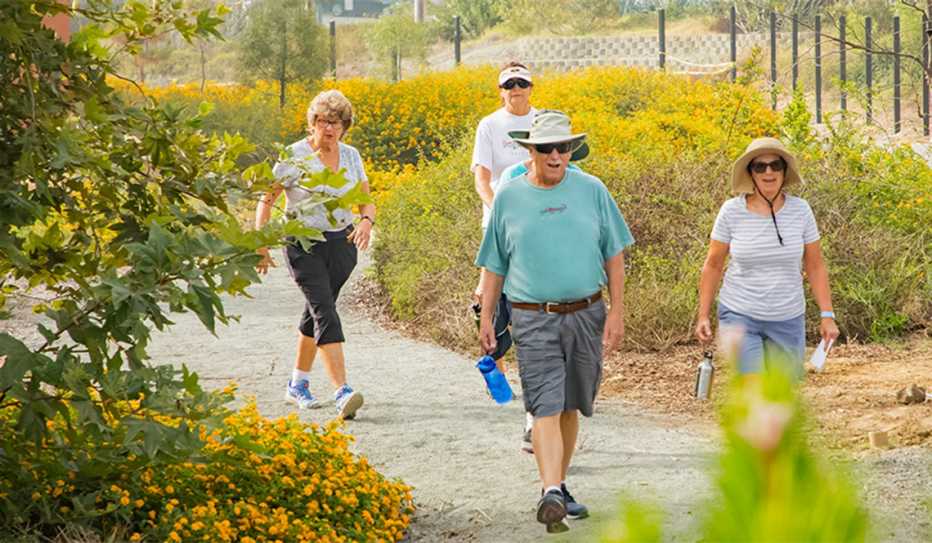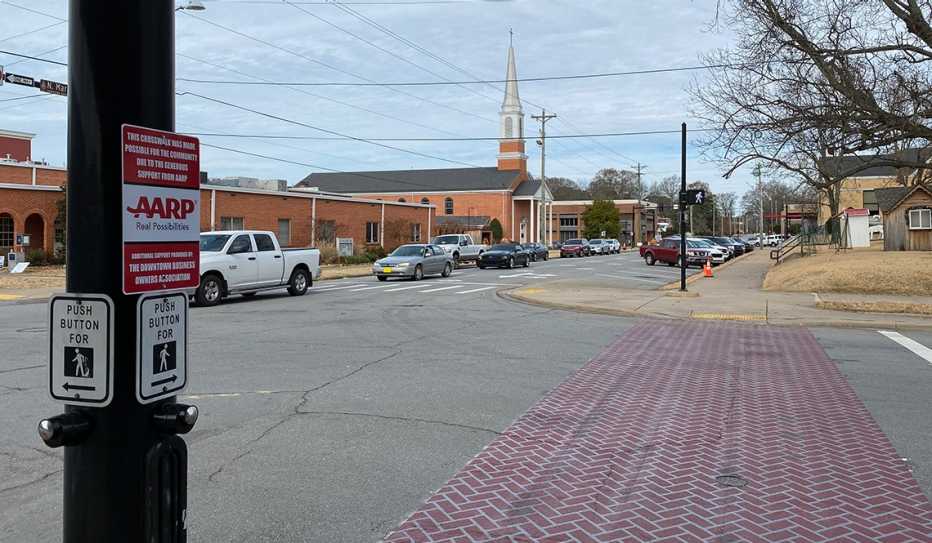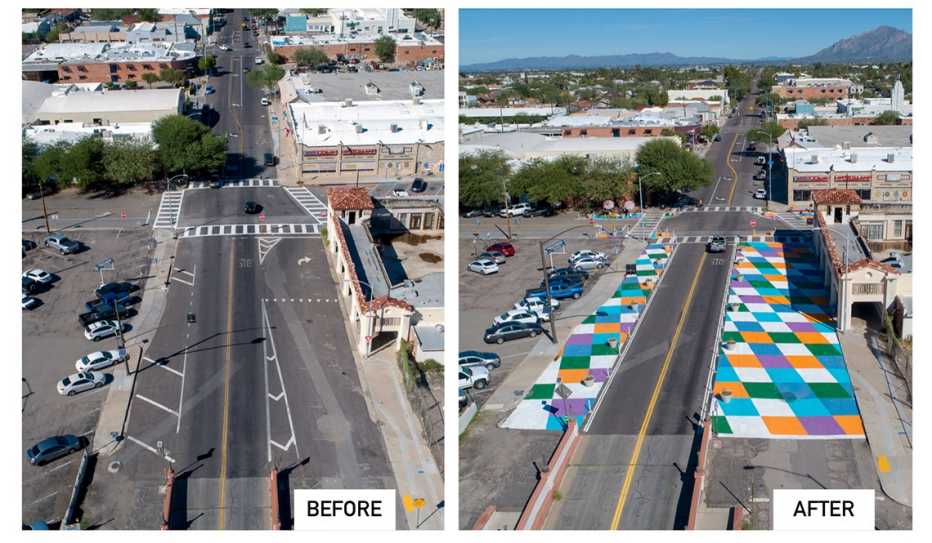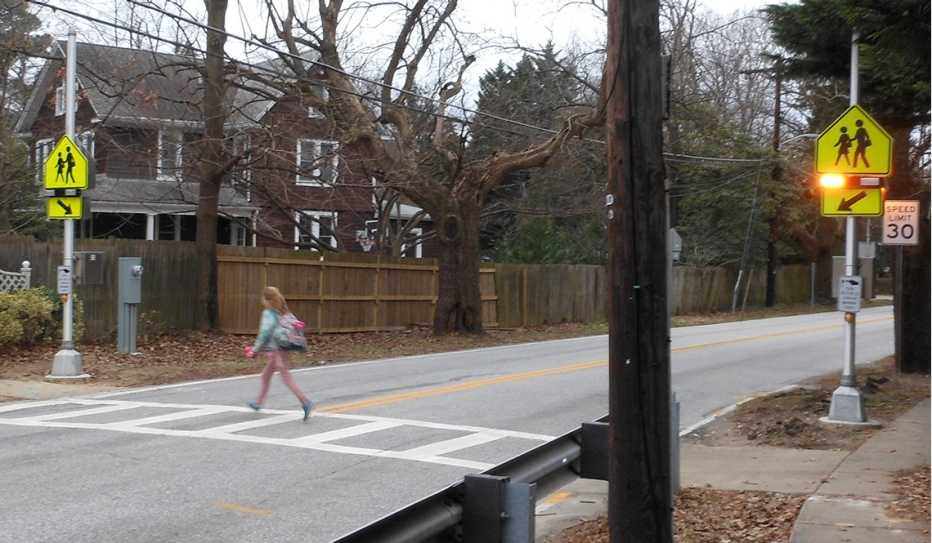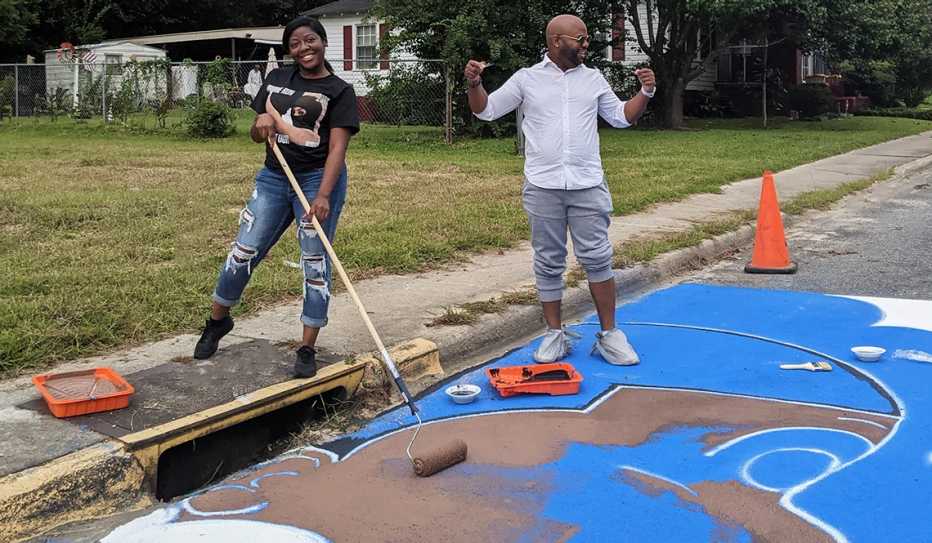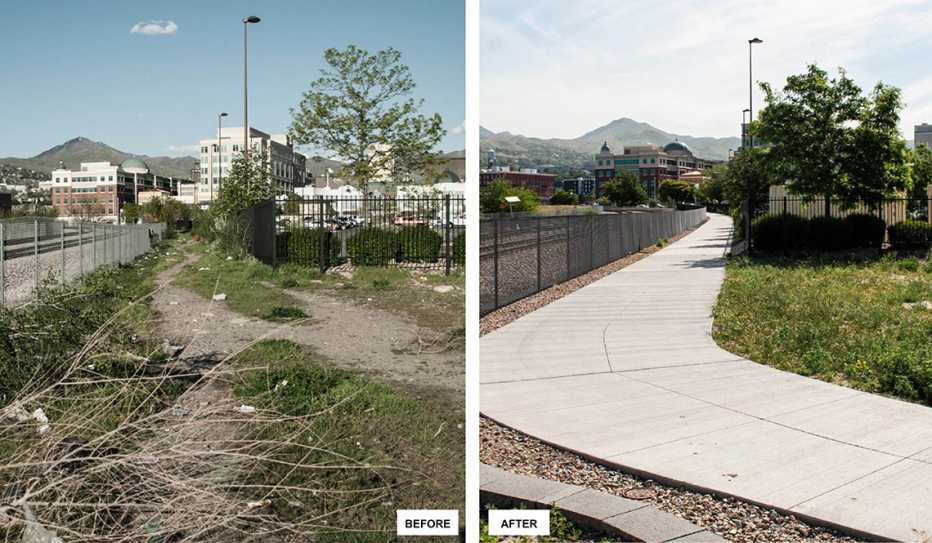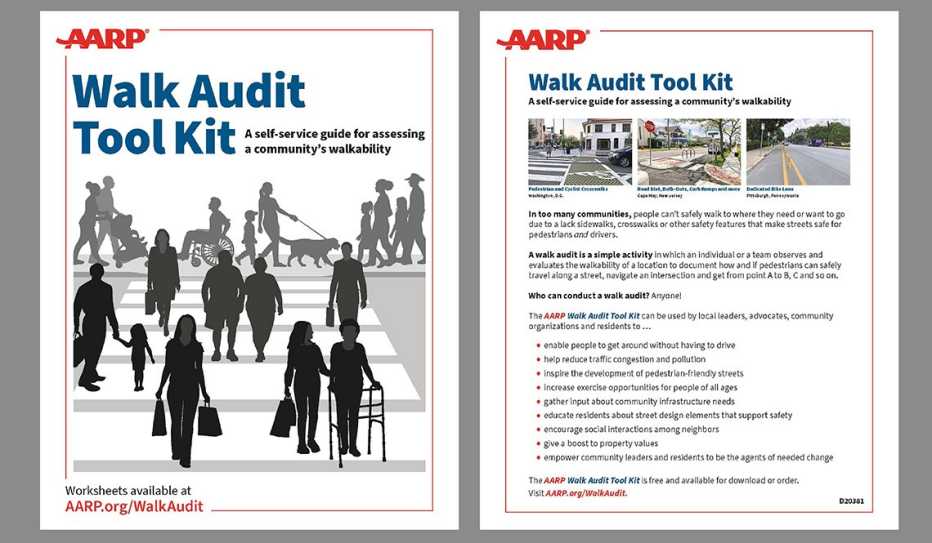AARP Hearing Center
The AARP Community Challenge has helped communities nationwide raise awareness about the need for local streets to be safe for all users, especially pedestrians. In many cases, AARP grant funds were used to both demonstrate and implement a solution for safer streets. Learn more below and click on the images to "visit" each community. Learn more below.
Northfield, Vermont

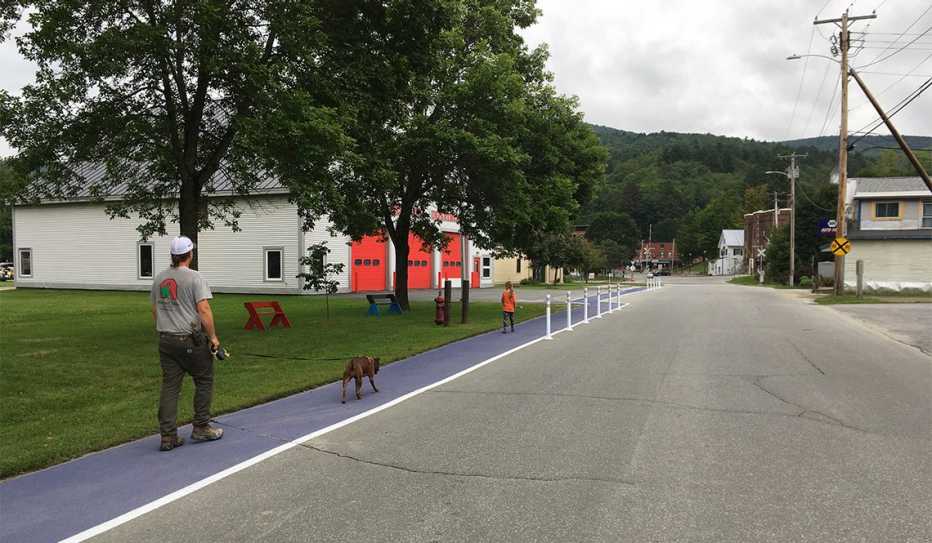
The pedestrians arrived soon after the purple paint dried. The 600-foot walk-bike lane was painted along Wall Street to connect the village's downtown (as well as a senior center and residential neighborhoods) to Dog River Park. "We noticed an uptick in the numbers of pedestrians using the lane versus traveling on the other side of the street," organizers at Northfield Common Connections told AARP. "It was so exciting to see runners, people with strollers, walkers, and others out walking the lane. The instantaneous use was the clearest indicator that our project was successful." One reason for the success is that prior to deciding whether and where a path was needed, volunteers used the AARP Walk Audit Tool Kit to assess the community's walkability strengths and weaknesses. The results informed where a walk-bike lane would be the most useful for and appreciated by residents.
Enid, Oklahoma

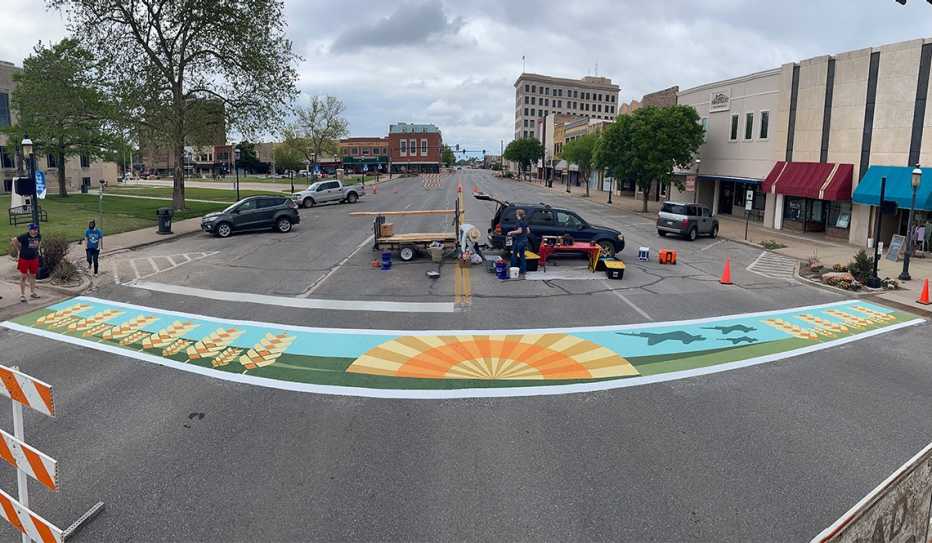
COVID and extreme weather didn't prevent staff and volunteers with Main Street Enid from creating what it believes are the first artistic crosswalks in the state. "The crosswalks catch the eyes of drivers, causing them to slow down and pay more attention to pedestrians, and it adds to our arts district," says Executive Director Natalie Beurlot about the four artistic crosswalks (including "Radiant City," pictured) designed by Jack Morgan, an architect at the nearby Vance Air Force Base. "Our community has loved this project and have asked for us to do more in the future." The project gained state and national recognition, most notably at the National Main Street Conference. Leaders from other cities have since contacted Main Street Enid for advice about implementing crosswalk art in their communities.
Hendersonville, North Carolina

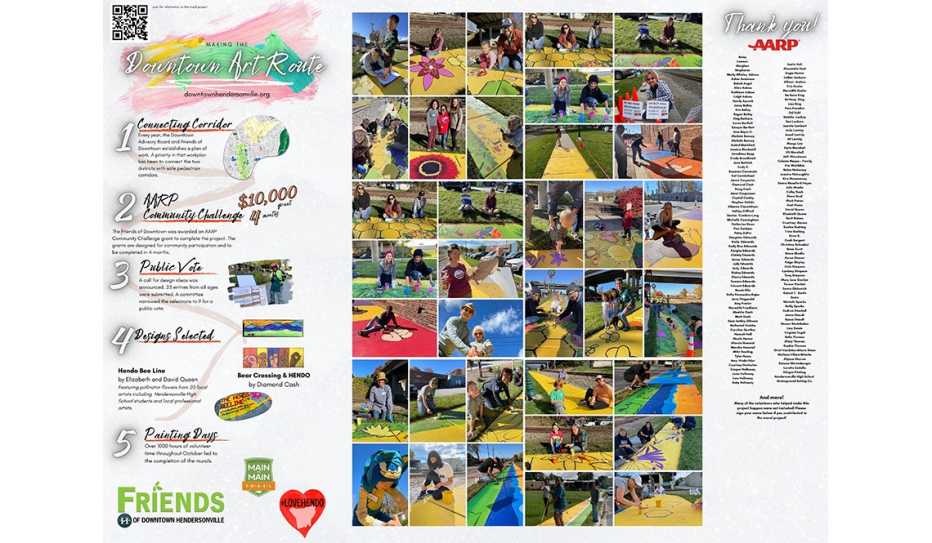
In addition to creating two sidewalk murals to bring attention to the need for safe pedestrian pathways between the small city's two downtown districts, the project (called Downtown Art Route) wound up engaging more than 200 community volunteers, many from the local high school's art classes. The pictured promotion summarizes the steps involved in soliciting and then selecting the two winning designs. The "Hendo Bee Line" mural featured paintings of 20 pollinator flowers. The "Bear Crossing" mural features five hands spelling the word "Hendo" (the city's nickname) in American Sign Language. Each hand is a different skin color in honor of the community's racial and ethnic diversity.
Sioux Falls, South Dakota

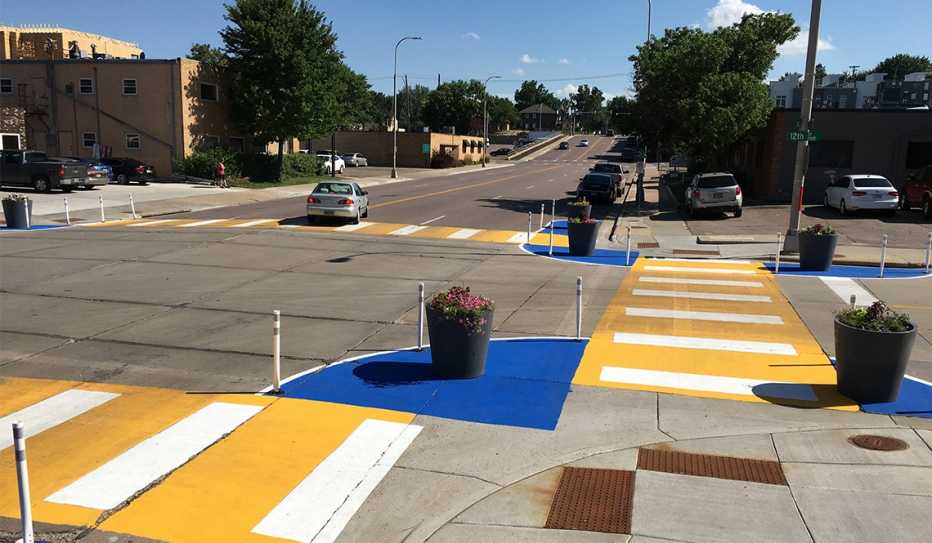
By using tactical urbanism methods — which are lighter, faster and cheaper ways of creating infrastructure improvements — Downtown Sioux Falls, a civic improvement group supported by local businesses, added bump-outs (also called extended curbs), reflective delineator lines and large planters filled with flowers to create a visual and physical barrier between pedestrians and vehicles. The result: “Drivers actually slowed down!” said Joe Batcheller, the organization’s president. “The project helped reduce speeds by 20 percent on average.”
Honolulu, Hawaii

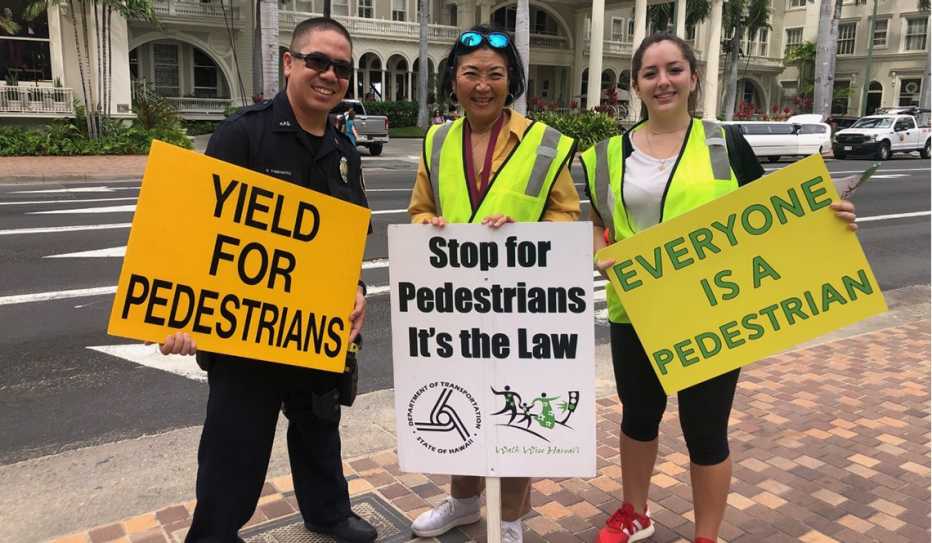
Organizers at the Waikiki Community Center originally planned to beautify Waikiki neighborhoods by painting utility boxes with cultural images. When that project got derailed due to permit challenges, they pivoted to do much needed sidewalk safety and repair work — something local older adults identified as a community need. Accompanying the efforts, the center educated residents about “defensive walking” (i.e., staying alert to one’s surroundings and potential risks from people and vehicles) and led an awareness campaign promoting pedestrian safety.
Charleston, South Carolina

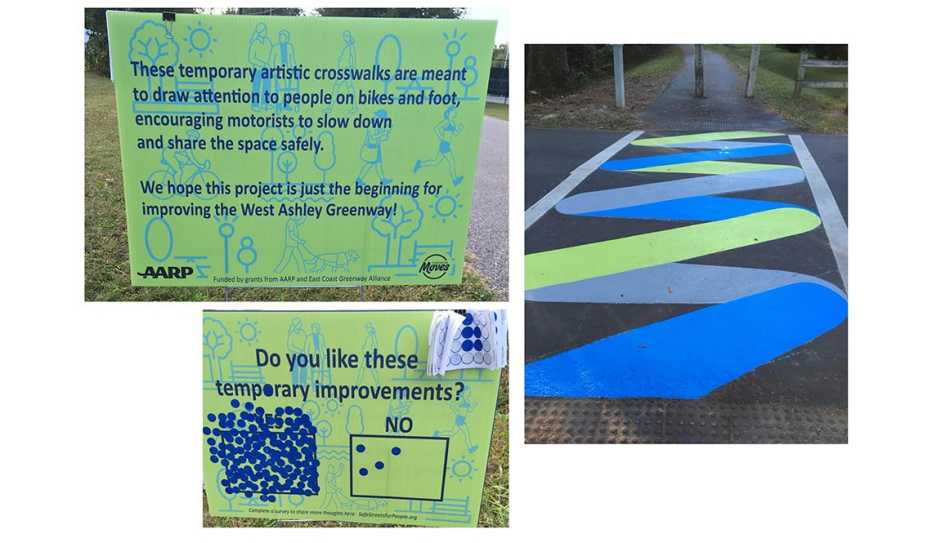
Conflicts between motorists and pedestrians at intersections along the West Ashley Greenway (referred to as WAG) were becoming too common. An AARP Community Challenge grant was used to buy the paint and other supplies needed to create three artistic crosswalk murals and signage on the 8-mile walk-bike trail in order to slow vehicle traffic and draw attention to the safety needs of pedestrians and cyclists. Two-dozen volunteers age six to 70 participated in the installation. “Community members need to be able to get places without driving, and to feel safe when they’re walking and biking,” said project director Katie Zimmerman.
- Watch a video about the greenway project.




























































